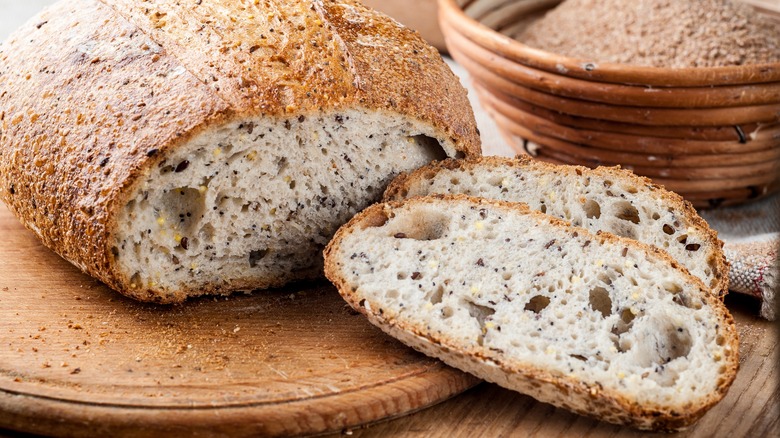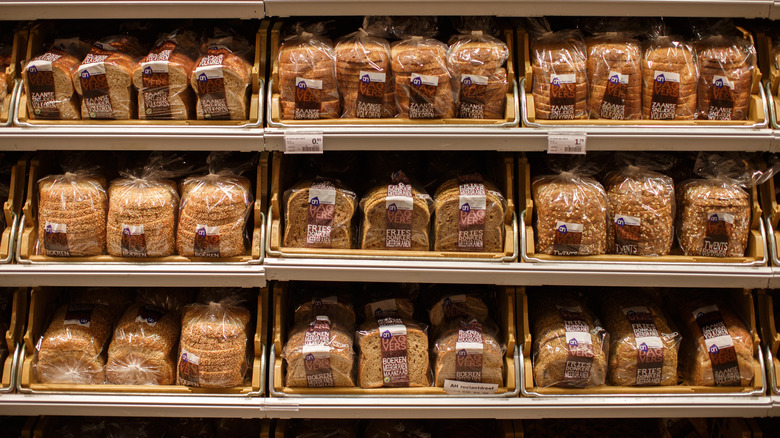To Keep Your Homemade Bread Crusty, Stay Away From Plastic
While buying a pre-sliced loaf of bread from the store is easy and very common, there's something special about baking it yourself. Whether you're craving a loaf of sourdough, brioche, ciabatta, or even some old-fashioned sandwich bread, the smell that fills the kitchen is indescribably satisfying, and the first warm slice topped with a smear of butter is oh-so-delicious. According to Country Life Natural Foods, some of the upsides of baking your own bread versus buying it are: the therapy of baking, controlling the ingredients you put in it, ditching any processed additives, it's cheaper, considering big bags of flour can produce a numerous amount of bread, and it reduces waste of the plastic the bread is usually packaged in.
Speaking of plastic, wrapping your homemade loaf with it can determine the overall texture of the bread, along with how long it stays fresh. There's a reason stores have been shipping bread this way for years; however, it has its pros and cons.
It steams the bread
While most bread sold in the grocery store is wrapped in plastic and sealed with a twist-tie, according to Southern Living, this is mainly to maintain freshness and doesn't account for how it affects the texture. It's true the bread stays fresh for longer when packaged this way, but the plastic also traps the moisture within the big and softens what should be a crispy crust. That being said, when baking up your own loaf at home, if you desire a brown crust that is slightly crispy, wrapping it in plastic is the worst thing you can do.
According to Food to Impress, the best way to store it is in the same condition it's in after baking, which is at room temperature and preferably inside a bread bin or cupboard. Some other ways to create a crisp crust are by baking it in dark metal cooking tins, and resisting the urge to brush the baked bread with butter or oil. On the other hand, if your bread is too dark with a tough crust, it's likely that you're over-baking your bread, cranking the oven temperature too high, or working with a low-moisture dough.

